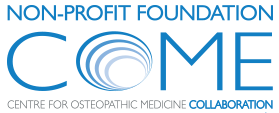“Disproportionate Olympic Rings” – the usage of a biopsychosocial (BPS) framework of care when managing people with musculoskeletal pain by osteopaths in Aotearoa/New Zealand– A qualitative study
| By Patrick van Dun | 0 Comments
To address chronic musculoskeletal (MSK) pain effectively, a multidimensional model of care such as the biopsychosocial (BPS) model may be required. However, to date, the incorporation of the BPS model into osteopathic practice by New Zealand (NZ) osteopaths is unknown. Hence, the aims of this study were to: 1) investigate the incorporation of the BPS model into osteopathic practice by NZ osteopaths; (2) explore the attitudes and perceptions about the BPS model among NZ osteopaths; and (3) investigate the barriers to implementing the BPS model in NZ osteopathic practice … ABSTRACT







